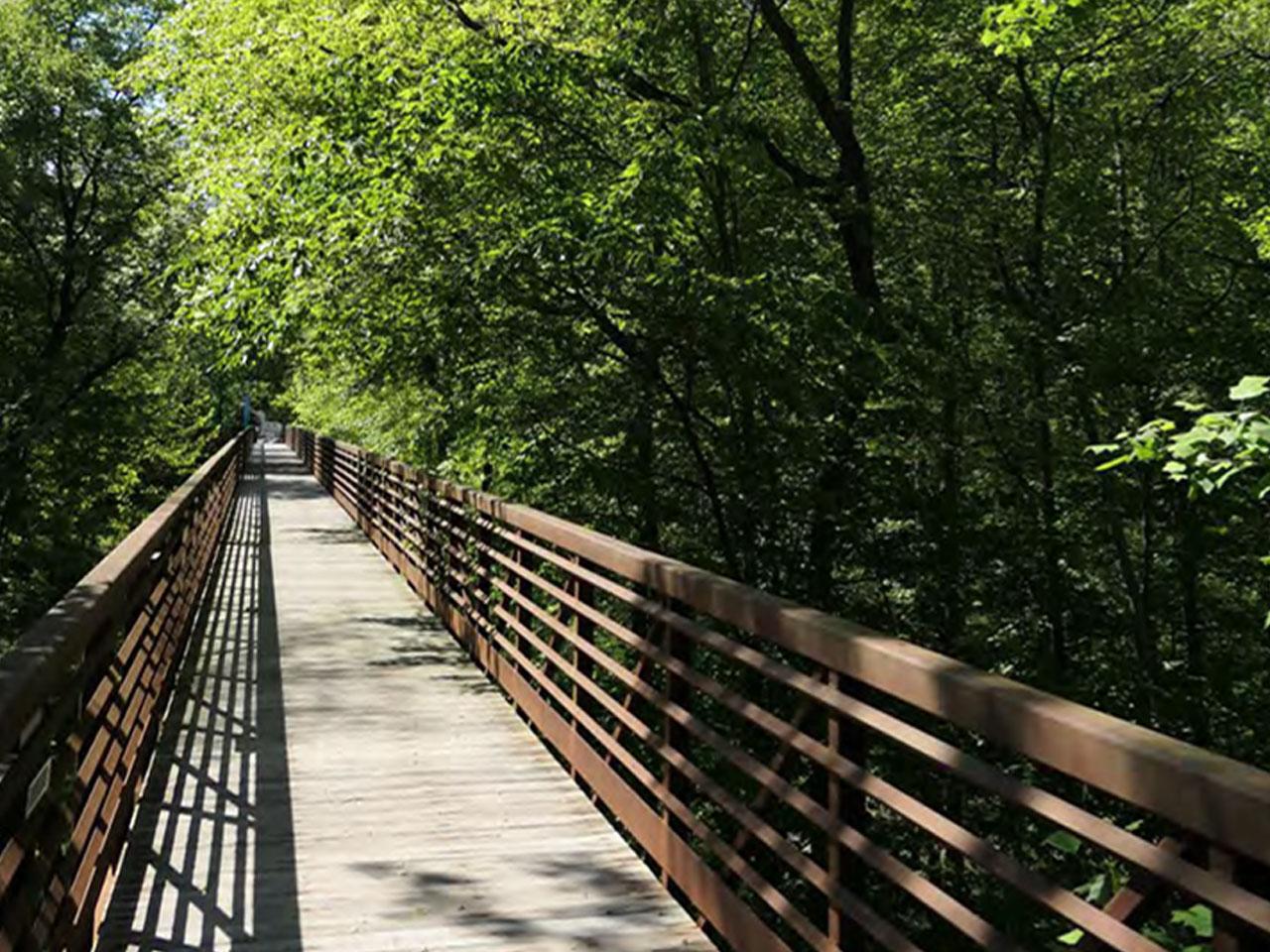The Green Infrastructure Master Plan guides voluntary actions to conserve a network of connected natural areas and to add trees and green spaces in underserved communities in Anne Arundel County. Conservation of green infrastructure supports public health, recreation, tourism, wildlife, and water quality. The Plan includes a bold goal to conserve 5,000 more acres of open space by 2030.
The County Council adopted the Green Infrastructure Master Plan on April 4, 2022. The adopting legislation, Bill 8-22, required notification of owners of properties included in the Green Infrastructure Network that were not included in the 2002 Greenways Network. The County mailed all subject property owners at the end of April and collected responses through July 5, 2022. The updated Green Infrastructure Network Map has been revised and updated based on the property owner responses.
View or download the final version of the Green Infrastructure Master Plan through the following links.
Native Trees for your Property or Community
Backyard Buffers and RiverWise Congregations: Programs of the Watershed Stewards Academy provide assistance and funding to plant native trees and rain gardens on private property and congregational grounds.
Marylanders Plant Trees: Maryland Department of Natural Resources program that provides coupons for $25 off the purchase of a tree.
Managing your Yard for Wildlife
Backyard Habitat Certification: National Wildlife Federation program to promote and recognize landscaping for wildlife benefit.
Bayscaping: Alliance for the Chesapeake Bay and U.S. Fish and Wildlife Service partnership has developed a native plant center online resource and a guide to conservation landscaping.
Forest Management Plans: Maryland Department of Natural Resources program that provides technical assistance to prepare management plans for forests over 5 acres. Participation leads to reduced property tax assessment.
Stormwater Management
Watershed Protection and Restoration Fee (WPRF) Credit Program: Eligible property owners in Anne Arundel County have the opportunity to reduce their WPRF assessments by up to 50% for proactive and sustainable uses of stormwater runoff controls like installing rain gardens or cisterns.
Land Conservation
Scenic Rivers Land Trust: Private, non-profit organization that helps land owners conserve the legacy of their land through conservation easements, which can provide federal, State, and County tax benefits and other potential financial compensation.
Agricultural and Woodland Preservation Program: County program focused on conserving working farms and forests.
Planning Our Green Infrastructure
Green Infrastructure includes large, high-quality natural areas (hubs) and the linear corridors that connect them. These areas include forests, streams, wetlands, and fields. Public ownership protects some areas, such as Federal, State, and County parks. Easements protect other areas that are privately owned. The Green Infrastructure network has many benefits. It improves water and air quality, supports plants and animals, and ensures that residents can continue to enjoy a green and healthy Anne Arundel County.

This Master Plan update was a joint effort between the Office of Planning and Zoning and the Department of Recreation and Parks. Additional partners include local, State, and Federal government, environmental nonprofits, and the private sector, among others. Since the Green Infrastructure Network weaves across the entire County, public participation is essential. We invite you to explore our resources for more information on how you can stay involved. We also welcome you to email greenplan@aacounty.org with questions and comments.
How will my community benefit?
Green Infrastructure supports scenic views, sustains healthy soils for farming, and provides for recreational trails. It also prevents damage from stormwater runoff and nourishes healthy watersheds and coastline. Some of the other ways in which Green Infrastructure serves you are:
Economic
- Supports wildlife viewing, hunting, and fishing—a $1.3 billion dollar industry in Maryland.
- Increases tourism and expenditures on dining, lodging, and other services.
- Increases nearby property values by 10-20%.
- Preserves farmland for agricultural jobs, agritourism, and local food production.
- Supports clean streams and rivers which in turn support the maritime industry.
Environmental
- Protects quality of surface and groundwater resources.
- Provides for plant and animal habitat and migration corridors.
- Creates an enjoyable sense of place by protecting natural features and scenic vistas.
- Helps mitigate effects of climate change such as poor air quality, nuisance flooding, and heat islands.
- Supports opportunities for active transportation.
Recreational
- Provides space to walk, jog, hike, bike, ride horses, canoe, kayak, picnic, fish, hunt, and birdwatch, among other outdoor activities.
- Opportunity for outdoor exercise creates potential medical cost savings of approximately $1,100 per person per year

